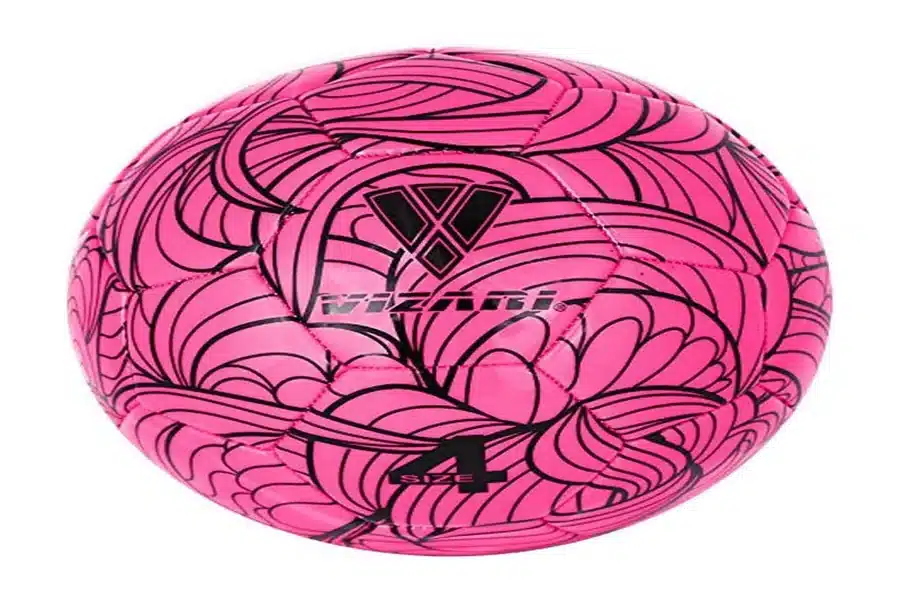How to Choose the Right Type of Footballs When Buying in Bulk

For all the sports enthusiasts, coaches, and team managers out there, you can now buy footballs bulk order for your school, team, or community programs. It is important to choose the right footballs while buying in bulk. In addition to looking for the cheapest deal out there, you also need to look into the durability and quality of the accessory.
You could be supporting a high school varsity team or a football squad in your community. You should know how to buy footballs in bulk for your purpose.
What is the Importance of Buying in Bulk?
If you are a part of a team or an organization, you can consider buying footballs in bulk for the best results. It turns out to be a cost-effective option. Moreover, it helps you keep a store of enough balls for games and practice sessions. You can also save yourself from last-minute issues in case a ball gets damaged or lost.
With reliable providers like Ergode, you can come across a wide range of footballs in bulk. These footballs are designed for different levels of play, including competitive and recreational. With a number of available options, it is important to choose the right footballs.
1. Knowing Player’s Age & Skill Level
A primary aspect you need to consider is the players who will use the footballs in the first place. The player’s age and skill levels will help you understand the type of football you need. Some options are:
- Size 1 or Mini: These are great options for skill drills or toddlers. They are perfect for young kids who are only starting out for fun and casual play. Mini options are great for promotional purposes or in the form of collectibles.
- Size 2 or Midi: These are perfect for small kids who are aged between 3 and 6 years. Midi footballs assist young players in the development of basic skills, including dribbling and passing.
- Size 3: These footballs are designed for kids in the age range of 6 to 9 years. This is a great size for youth matches as they help young players gain control and confidence.
- Size 4: These are suitable for players aged 9 to 14 years. These are also known as the transition ball. They are great for youth leagues.
- Size 5: This is the standard football size. They can be used across high schools, colleges, and even for professional teams.
2. Matching the Ball to the Aim
Different footballs will serve different purposes. You should understand the differences between them:
- Foam or Recreational Balls: These are usually used across football camps or casual play. Typically, younger kids use these footballs. Foam balls are lightweight and great for indoor use. However, they are not highly durable.
- Match Balls: These footballs are premium versions. They are professionally designed for gameplay. They are supposed to be designed for meeting strict regulations for weight, performance, and size. They are typically made out of premium PU or Polyurethane. The use of this material maximizes accuracy and touch.
- Training Balls: These footballs are regarded as the core of practice sessions. When you buy these in bulk, they deliver great durability and practicality. They are designed to bear constant wear & tear across different surfaces. If your team practices daily, you can buy bulk training balls for maximum durability.
3. The Playing Surface
The surface on which your team will be playing is also important to consider.
- Grass: Usually, most common footballs function great on the grass surface. You should search for bulk footballs made out of composite leather or PU to improve durability and grip.
- Indoor: If players are practicing the game indoors, you should search for specialized futsal balls. These are smaller, heavier, and can handle low bounces on hard surfaces. Indoor balls are available with a foam lining to improve the overall control.
- Turf: Artificial surfaces, like turf, are tough on footballs. Therefore, you can choose the ones with reinforced PVC or TPU casings.
- Beach: For those with a recreational purpose, these footballs are larger and lighter. Therefore, they perform well on soft and uneven surfaces.
4. Material & Construction
- Leather: If you are buying match footballs in bulk, you should look for the use of genuine leather material. This offers excellent grip and performance. Usually, these options are slightly expensive and made exclusively for practice sessions.
- Synthetic Leather: These are affordable options when compared with genuine leather. Therefore, they are great for training sessions. Usually, synthetic models are also moisture-resistant. Therefore, players can use them in the rain as well.
- PVC or TPU: These footballs are common in recreational and training sessions. These materials are durable and affordable. TPU delivers a softer touch, and PVC is super durable.
- Foam: These are perfect for indoor play and for kids. Foam football balls are safe and lightweight.
6. Control Features
The football’s texture and panel design affect how effectively players are able to control it. Conventional models have 32 panels. On the other hand, modern designs have fewer panels for a smoother surface.
While buying in bulk, search for balls with textured surfaces or grip patterns. For younger players, a softer grip can make it easier to control the ball.
Conclusion
For bulk purchases, choosing the right footballs should involve looking into several factors, like the age of the player, the purpose, the materials, and the playing surface. You might be stocking up for practice sessions or preparing for a professional match day. The right footballs will improve the overall performance of the team.
